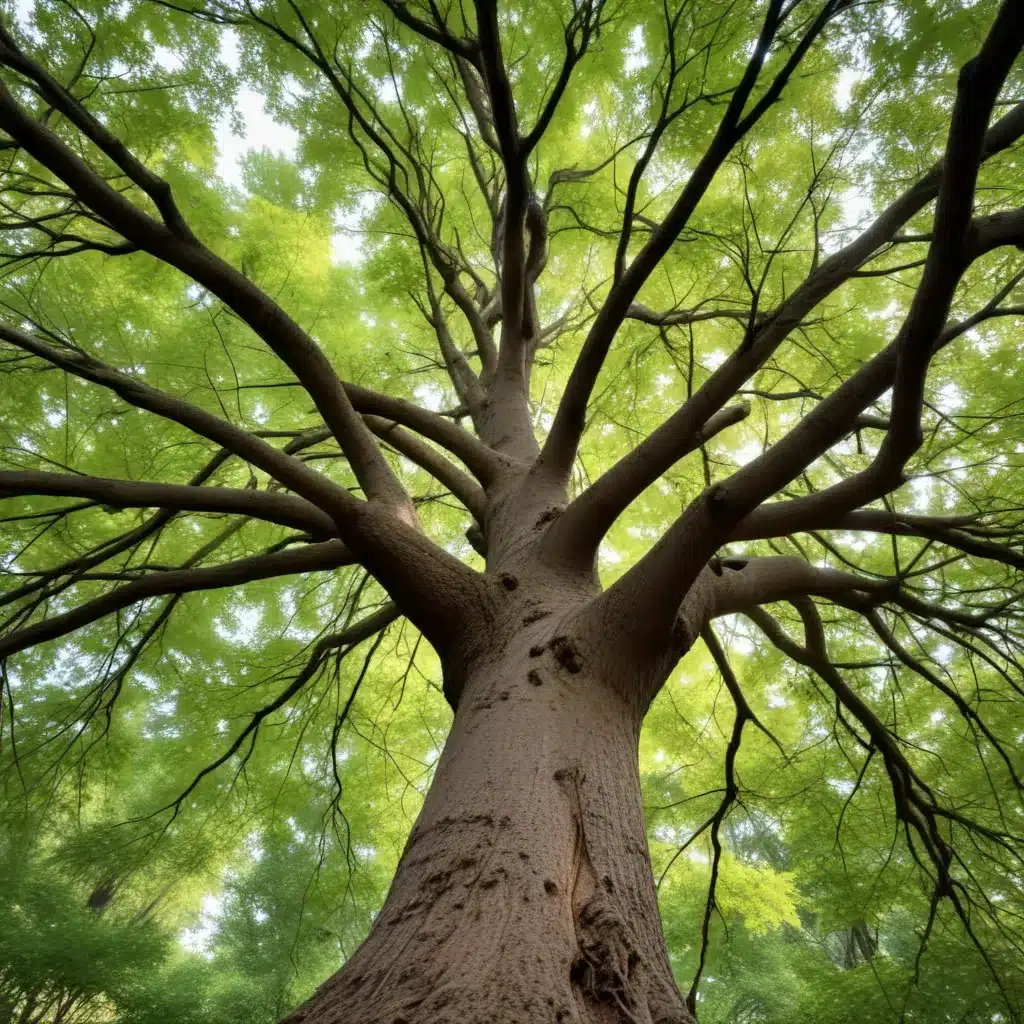
As tree care specialists at TriCounty Tree Care, we understand that tending to the health and longevity of trees requires a deep reverence for the natural world. Trees do not exist in isolation; they are integral components of complex, interconnected ecosystems that pulsate with the rhythms of the seasons. To nurture these living, breathing entities, we must adopt a holistic approach that aligns with the innate cycles of nature.
Exploring the Importance of Holistic Tree Tending
The Interconnectedness of Ecosystems
Trees are not merely individual organisms; they are vital threads in the tapestry of life, woven together with a myriad of other plants, animals, and microorganisms. Each tree serves as a hub, providing food, shelter, and support to a diverse array of species. By recognizing the interdependence of these systems, we can cultivate a deeper understanding of how our actions impact the delicate balance of the natural world.
Recognizing the Seasonal Cycles
Just as the four seasons shape the natural landscape, trees undergo a continuous cycle of growth, dormancy, and rejuvenation. Springtime ushers in a burst of new foliage and flowering, while summer sees trees reaching their peak vitality. Autumn brings a vibrant display of color as trees prepare for winter’s dormant phase. Attuning ourselves to these rhythms allows us to time our interventions and care practices accordingly, ensuring the long-term health and resilience of the trees in our charge.
Fundamental Tree Care Practices
Pruning and Shaping Techniques
Skillful pruning is an art form that requires a deep understanding of tree biology and growth patterns. By selectively removing deadwood, crossing branches, and suckers, we can encourage the development of a strong, balanced structure that promotes overall health and aesthetics. However, this process must be carried out with great care, as improper pruning can lead to disease, decay, and even structural instability.
Soil Management and Nutrient Replenishment
The health of a tree is intrinsically linked to the quality of the soil in which it grows. By analyzing soil composition, monitoring pH levels, and replenishing essential macronutrients and micronutrients, we can ensure that trees have access to the resources they need to thrive. Regular soil testing and the judicious application of organic amendments or fertilizers can make a significant difference in a tree’s vigor and resilience.
Tree Health and Wellbeing
Identifying and Addressing Tree Diseases
Trees face a multitude of potential threats, from fungal pathogens to insect infestations. By developing a keen eye for the subtle signs of distress, we can identify issues early and implement targeted integrated pest management strategies to mitigate the damage. This may involve the use of biological controls, cultural practices, or, as a last resort, the selective application of pesticides.
Promoting Tree Vitality
Enhancing a tree’s overall physiological function is crucial for its long-term health and resilience. By optimizing photosynthesis through proper pruning and nutrient management, we can bolster a tree’s ability to produce the energy it needs to fend off pests and diseases. Simultaneously, fostering beneficial microbial relationships in the soil can improve nutrient cycling and root health, creating a thriving, self-sustaining ecosystem.
Sustainable Tree Landscaping
Designing Diverse and Resilient Tree Populations
When planning tree-centric landscapes, it is essential to prioritize biodiversity. By selecting a diverse array of native species that are well-suited to the local climate and soil conditions, we can create resilient, self-sustaining communities that are better equipped to withstand the challenges of a changing environment. This approach not only enhances the aesthetic appeal of the landscape but also maximizes the ecological services provided by the trees, such as carbon sequestration, stormwater management, and wildlife habitat.
Regenerative Tree Planting and Establishment
Successful tree establishment begins long before the first sapling is planted. Careful site preparation, including soil decompaction and the incorporation of organic matter, lays the groundwork for a thriving tree community. Thoughtful watering, mulching, and staking techniques during the critical establishment phase can also mean the difference between a tree’s success and its demise.
The Art of Tree Observation
Developing Keen Sensory Awareness
Mastering the art of tree tending requires more than just technical expertise; it demands a deep, intimate connection with the natural world. By honing our senses and reading the language of trees, we can discern subtle cues about their health and well-being. The color of the foliage, the texture of the bark, and the posture of the branches all convey valuable information that can guide our interventions.
Cultivating a Mindful Approach
Approaching tree care with a mindful, contemplative mindset can unlock profound insights and deepen our understanding of the inherent wisdom of these living beings. By slowing down and connecting with nature, we can develop a heightened awareness of the rhythms and cycles that govern the life of a tree. This holistic perspective not only enhances our ability to provide exceptional care but also fosters a profound sense of reverence and stewardship for the natural world.
At TriCounty Tree Care, we believe that successful, long-term tree tending is not just about the technical aspects of care but about embracing the deeper harmonies of nature. By aligning our practices with the rhythms of the seasons and the interconnected web of life, we can nurture trees that thrive, not just survive, for generations to come. Join us on this journey of discovery as we explore the art and science of holistic tree tending.


